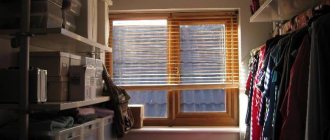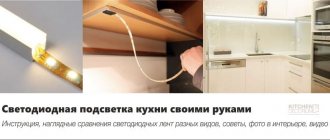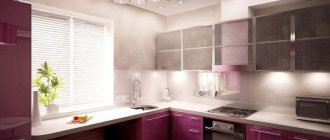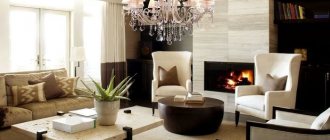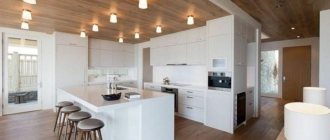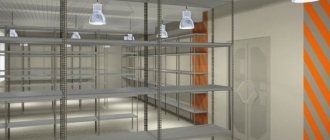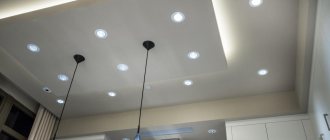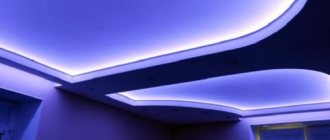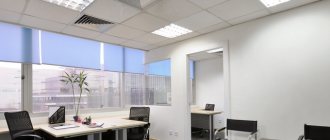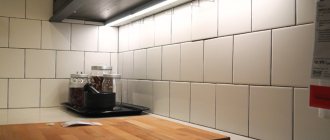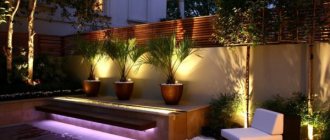When designing a room for a child, you need to take into account many aspects regarding the design - this applies to the choice of furniture, interior items, selection of wallpaper and other things. Also an important detail is the selection of the correct lighting for this room, since the selection of the correct artificial and natural light is very important for children's eyes. When developing a design project in graphic terms, it is necessary to correctly distribute the light in the children's room.
Lighting in a children's room affects the child's overall well-being, his psychological mood and the formation of his vision.
Options for planning children's room lighting
When choosing a room for a child, you need to take into account not only artificial, but also natural lighting that comes from the windows. Ideally, if the children's room faces southeast or east, then the light will fall in the right amount in the morning with the first rays of the sun, during the day it will softly illuminate everything around, and in the evening it will be replaced by electric lamps.
There should be no overly bright places or dark corners in the children's room.
If the windows face north or west, then when planning the design you need to take into account that there will be little light entering the children's room and this can be compensated for by properly distributing artificial lighting in the children's room.
When choosing lamps, you should give preference to durable structures rather than choosing chandeliers made of fragile glass. If this is a boy's room, then he may decide to play ball, and such a chandelier may suffer from this and be broken.
The correct placement of sockets in the interior is very important, since if a small child has access to this dangerous source of current, then this can result in serious consequences. If the outlets are not hidden under different surfaces or are in places accessible to children, then you can choose options with increased safety. Currently, there are many such options: closed with a lid, locked with a key, etc. Long wires that lie under your feet will prevent the child from moving freely around the room - it is better to hide them in the wall, run them along the eaves, and cover them with special plastic cases.
The number and location of lamps depends on the size of the room
Ideally, you need to create evenly diffused soft lighting throughout the room.
Briefly about the main thing
For a children's room, both natural and artificial lighting are important, and the ceiling, like no other interior detail, is involved in creating a comfortable and cozy space. Based on functionality, a distinction is made between top (main) and local lighting.
Stretch ceilings are the most practical and versatile option for a child’s room. With its help, you can create stylish combined lighting, zone the bedroom and create an original lighting design.
The lighting scheme for children of different ages will differ in the number of lighting fixtures and their location. Luminaires are selected based on their design, color temperature, safety and ease of use.
Nuances of lighting design
In order to correctly place light supply devices in this room, you need to take into account:
- child's age;
- the presence of various functional areas in the room - for playing, studying, sleeping;
- presence of natural light.
When zoning the space, you need to take into account that the play area needs bright ceiling lighting, which will not be harmful to the eyes and will allow the child to see the smallest details in puzzles, construction sets and other games. It is not necessary for this room to have dark corners, but too bright light will be harmful, it will cause the child excessive irritability, and will have a detrimental effect on the nervous system.
You can use a chandelier or slot lamps as central lighting.
It is advisable to place the workplace near a window so that the desk is well illuminated by daylight
Another important area is a place for studying, drawing, and reading. There is no need for overhead lighting for it - a table lamp that can freely stand on the table or be attached to it with clothespins or other fasteners would be ideal for use. When choosing such a lamp, you need to consider its benefits:
- It will preserve the child’s posture and vision.
- Will make various types of classes and educational processes convenient.
- It will create comfort, thanks to which such activities will be enjoyable.
The third zone in this room is a place for rest and sleep. It doesn’t require a lot of light bulbs, but only soft light coming from a night light will do.
Decorative night lights in the form of luminous toys are appropriate in a small child’s room.
For older children, table lamps located next to the head of the bed are suitable.
Where to place the switches
A children's room cannot do without switches that the child can use independently when he grows up.
For convenience, you need to install a durable switch near the door. Sockets and switches should be installed in the playing area and near the desk. After all, the child will need to connect a lamp, laptop, or e-reader.
Based on the photo, you can choose a light fixture that you like and is suitable for the children's bedroom. Properly organized lighting is the key to a child’s good health and vision.
General light
Division into zones can be done by integrating lighting into a suspended or plasterboard ceiling, into an arch, or by distributing hanging lamps around the entire perimeter. The light in the nursery should be neutral white for the main lamps and yellow for the bedside sconces.
The lamps must be evenly distributed across the ceiling so that the entire area of the room is illuminated equally well.
It is ideal to use LED bulbs due to the following advantages:
- Positively affects the baby's vision.
- The eyes become less tired.
- The light bulb consumes little energy.
- It has a low heating level and is durable in use.
- It is difficult to break as it is made of matte plastic.
When choosing lamps hanging from the ceiling, it is best to choose models in which the light is directed not downwards, but to the sides or up. This type will better diffuse electric lighting throughout the room.
Lamp with economical LED lamps in a nautical-style nursery
Pay attention to the type of lamps and color temperature
Once the luminaires and lighting scheme have been selected, the optimal type of lamps must be selected - this is a particularly important point. There are several types of lighting lamps: in residential premises, incandescent, fluorescent, halogen and LED lamps are most often used. Experts recommend giving preference to the latter.
Calculate the exact cost of repairs using an online calculator
and receive a free detailed estimate for repairs
Calculate
Elena Savina: “For all light sources in a room, depending on its design, it is better to use LED lamps - it’s safe and economical.”
When choosing LED lamps, it is important to take into account such a characteristic as color temperature, which is measured in kelvins (K). The comfort of staying in the room and the adaptability of the lamps to the needs of the child in different areas of the nursery depend on it:
- for the sleeping area, warm white lamps are suitable - 2,700-3,500 K (if sconces next to the bed are used for reading, it is better to use a cooler color - 3,500-4,500 K);
- For the working (study) area, cold daylight or white light is suitable - from 4,000 K (but not more than 6,500 K).
Photo: syskaledlights.com
Natural light
The penetration of sunlight is a natural source of lighting, it is useful not only for children, but also for adults. In order for a large amount of natural light to enter this room, you need to select curtains made of loose fabric and light, soft shades. With intense sun penetration in south-facing windows, it is necessary to use thicker curtains, since an excess of such light is also not necessary.
Natural light is the most optimal for a child's eyes
If necessary, you can completely abandon decorating the window with curtains.
Place switches at the optimal height for you and your child
Using the central lighting switch should be convenient for both the child and the parents. The optimal height for its placement is 70-90 centimeters from the floor, but it is calculated in each case individually (taking into account the average height of all family members).
A dimmer, an electronic dimmer that will allow you to control the brightness of the light in the room at different times of the day, will not be superfluous in the nursery.
Photo: asecurelife.com
Lighting in a boy's room
To emphasize the natural light in a boy’s nursery, you can choose sky-blue shades of curtains, which will also fit well with the design of the entire room, and yellow and green curtains can be suitable for children of both sexes. You can hang strict chandeliers made of durable materials and using LED bulbs on the ceiling. If the room is decorated in the style of some kind of fairy tale, a movie about heroes, then lamps, sconces, and night lights need to be selected so that they emphasize the overall design solution.
Slots that can be moved along a guide rail are used as general lighting
Modern solution - built-in linear LED lamps
Floor lamps
Using a floor lamp, you can highlight a play area or a work area. You can also highlight the area near the bed with light so that by plunging the rest of the room into twilight, the child can better prepare for sleep.
The main requirements for such lamps are safety. Lamps used for lighting in a children's room must be stable, not contain elements that easily break off, and if the lamp is broken, there should be no small and sharp fragments from it. Wires and cords must be removed as much as possible so that the child cannot get tangled in them and drop them.
In the girl's room
For a little princess, pink, lilac, yellow curtains that will beautifully scatter light around the room will look impressive on the windows to softly transmit the sun's rays. There is a wide variety of different lamps on sale in the form of flowers and even dolls, which will not only perform a practical function, but also look aesthetically beautiful and stylish.
For a little girl’s room, you can choose interesting lamps in the shape of animals or toys.
A teenage girl will be interested in modern models of lamps, matched to the style of the room.
Night lighting in the nursery
LED lighting is indispensable in a nursery . Can be mounted in the baseboard, or, conversely, under the ceiling. The child is not afraid to fall asleep with it.
A sconce with a dimmer will perform a similar function.
What should not be forgotten at any age is that any lamp should have a shade, which one is a matter of taste, but the bulb must be covered in order to preserve the child’s vision and provide emotional comfort. Modern lamps are equipped with rheostats that allow you to adjust the brightness of the light, so the industry has taken care of our convenience and safety. We think about the safety of the child when choosing any of the lamps: firstly, it is its stability (floor-standing, table-top), good fastening (portable - clip-on); secondly, the material from which the lamp is made must be environmentally friendly; and naturally, for very young children this means inaccessibility to sockets, wires, and the insides of lamps - after all, they are so inquisitive! We will provide them with comfort and coziness! May they be healthy and happy!
Types of lamps
Lighting in a nursery is of great importance, since its quality is very important, not harming children's vision. When choosing lamps, you need to be guided not only by your taste and their appearance, but also pay special attention to the material from which they are made, their performance qualities and their style, which corresponds to the overall design of the entire nursery space. There should be no fragile things in this room, especially for small children living in it, who can play a little and break something, and this also applies to lamps located on the ceiling, wall or shelf. Therefore, they must be made of durable material and well fixed to a vertical or horizontal surface.
A lamp in the shape of a moth would be appropriate in a small child’s room
You can make such a lamp yourself from wood and colored ropes.
Hooked
To emphasize the style, which involves paying attention to interior details, this also applies to lighting, chandeliers, lamps and sconces that are mounted on the wall with hooks. This type of mount is very convenient for securing lighting fixtures and would be ideal for a nursery.
Wall night light in the shape of a pink flower
Spot
These types of lamps are widely used for suspended, suspended or plasterboard ceilings in children's rooms.
Implementation of general lighting using spotlights built into the lower tier of a two-level ceiling
Advantages of using point devices:
- If you have low ceilings, it will be inconvenient to use hanging chandeliers, and the use of this type of lamps, using their ability to reflect light, will also make these ceilings visually higher.
- With the correct distribution of light over the entire surface of the ceiling, they not only visually expand the space, but also have a beneficial effect on the child’s vision.
- They meet safety requirements for children.
- With their help, you can carry out the necessary zoning of the children's room.
- Some models have adjustable light brightness.
- With their help, you can create fantastic patterns, drawings, emphasize contours, and mark the boundaries of a multi-level part of a plasterboard ceiling.
Using spotlights mounted in a shelf above the workplace, you can provide uniform illumination of the desk
Ceiling
The main sources of light have always been lamps hanging from the ceiling. You can use this method to illuminate a table for homework, drawing, and other activities that require bright lighting. The play area also needs this kind of lighting.
The appearance of the ceiling lamps should be combined with the overall design of the room
Multi-level zoning
The optimal solution would be to create several light levels. The play area furthest from natural light needs more intense lighting. Thus, the so-called overhead light is installed along the perimeter of this zone.
The central part of the room, that is, the seating area, is separated from the general space by “medium light” with a softer glow. It is customary to install a large number of decorative lamps and other additional light sources here. The third, “lower light,” is intended for zoning the workplace. For this purpose, built-in lighting, a table lamp and small side lamps are most often used.
Some designers highlight the fourth level of light zoning - separate lighting in the sleeping area. However, it is only suitable for large rooms or, in most cases, it is replaced by artificial light in a play area or work area.
Important! When zoning a room for two or more children, it is necessary to create clear light boundaries separating the work, play and recreation areas. This is necessary so that during separate classes the children do not interfere with each other and are not distracted by excessively bright light in the opposite part of the room.
In conclusion, I would like to remind you once again that a children's room requires sufficient electric lighting. All devices must meet international quality standards, be safe and functional. They should not be easily accessible, like wires, sockets, and switches. When creating central lighting, do not skimp on lamps - choose models made of durable materials with the ability to adjust the brightness of the light.
How to plan light in a child's room (2 videos)
Ideas and lighting options (55 photos)
Photos of examples of children's room lighting
In this room you can see the implementation of a children's design project in the spirit of a fairy-tale forest, which is favorably emphasized by lighting that has different colors and softly diffuses the light. On top of the sofa, spotlights are built into the plasterboard ceiling, additionally illuminating this area, but above the bed, on the contrary, there are none to create a comfortable stay in this area for sleeping and relaxing.
To place spotlights in the children's room, arrange a two-level ceiling
This nursery belongs to two children of different sexes, which is divided into two zones using a partition that turns into an arch. Each part has a window with curtains of different colors, which highlight the soft, natural light that penetrates into this room. Artificial ones include built-in spotlights in the ceiling covering; pay attention to the photo of the sconce in the nursery above the bed.
Each zone is decorated in its own color scheme
In this room you can see the successful use of several types of lighting: natural for the study area, spot and basic in the form of several lamps located in the central part of the ceiling.
The main lighting is provided by spotlights, wall sconces are placed above the bed, and a table lamp is used to illuminate the desktop in the evening.
